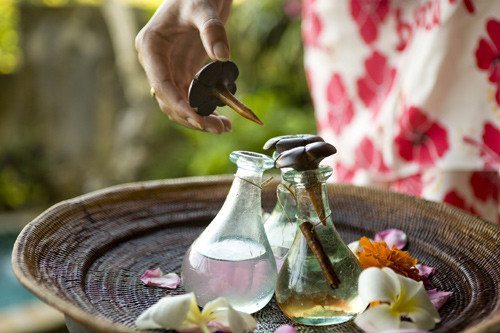
The Modern Science of Aromatherapy
All-natural healthcare is appealing. Nevertheless, smart people hesitate to put their faith in a discipline that lacks solid research and convincing proof.
Luckily, there is over a century of evidence that aromatherapy essential oils can help with everything from infection control to arthritis and migraine pain.
So let’s review the modern science behind aromatherapy.
What is aromatherapy?
It’s is a healing art that treats physical (and emotional) problems with essential oils. The oils can be either inhaled or massaged into the skin.
In addition, aromatherapy begins with the premise that a healthy body wants to stay in balance. When poor lifestyle choices or invading contaminants disrupt that balance, illness occurs. Essential oils (saps extracted from plant blossoms, leaves, bark and roots) can restore balance and good health.
How does “inhalation” aromatherapy work?
Learning how essential oils enter and affect your body – this is part of the science behind aromatherapy.
First of all, be aware that essential oils are volatile. That means they generate vapors that float through the air. When you deliberately inhale an oil, its vapor molecules enter your lungs. And from there, they make their way into your bloodstream.
Furthermore, as you inhale, the oil molecules make contact with tiny olfactory nerve receptors inside your nose. These receptors take the molecules directly to your limbic system, the part of your brain that regulates metabolism, controls stress responses, and governs mental activity.
How long has aromatherapy been used?
Essential oil therapy is nearly 6,000 years old. For example, ancient Egyptian healers put small herbal cones underneath a patient’s headdress. As the cones slowly melted, their curative oils were absorbed through the scalp.
In pre-Columbian Mexico, the sick routinely visited healing huts filled with indoor, hot water pools. Healers laid medicinal flowers, leaves, and herbs on rocks scattered throughout those pools. As a result, when steam penetrated the plants, their vapors were inhaled. And when the plants’ sticky oils collected on the stones, it was massaged into the patient’s body.
When did the science behind aromatherapy start to emerge?
The French chemist René-Maurice Gattefossé is considered the father of modern aromatherapy. In 1910, almost accidentally, he discovered the healing properties of lavender oil. His hand had been badly burned in a laboratory accident. Not sure what to do, he applied lavender oil to the area. To his own amazement, the burn healed quickly and left no scar.
As a result, Gattefossé spent the remainder of his career investigating the chemical properties of essential oils. Along the way he learned, for example, that many oils had been used during World War I to treat combat burns, skin infections, gangrene, even gunshot wounds.
By the mid-1950s massage therapists, nurses, doctors and other health practitioners worldwide used inhalation aromatherapy and essential oil massage. Some worked only with essential oils. However, others used the oils along with more traditional medical practice.
The Research is Persuasive.
Today, a number of serious studies demonstrate the science behind aromatherapy. They suggest that when combined and used properly, essential oils can relieve pain, improve mood, and promote relaxation. Here are just a few of the findings:
- When qualified midwives and doctors use essential oils of rose, lavender and frankincense, pregnant women feel less anxious about childbirth and use less labor medication.
- In addition, essential oil massage therapy can combat depression.
- Multiple studies find that aromatherapy can relieve pain. In one study, people with arthritis used less pain medication when they also used aromatherapy.
- Finally, a recent study shows that essential oils of lavender, rose, and peppermint soothe migraine pain better than some prescription drugs. All three oils are found in Headache ReLeaf Roll-On.
Don’t Make It Difficult!
Want to try aromatherapy? You can safely start anytime you like. Just pick up a good book on the subject and gradually begin to add essential oils to your at-home medicine cabinet. Any good book will include more background on the science behind aromatherapy. And it will teach you how to use specific essential oils to treat minor, everyday health problems.
If you prefer, you can visit a licensed aromatherapist in your area and together develop a treatment plan that meets your needs.
Finally, you can introduce yourself to aromatherapy with products available at better natural food stores and homeopathic pharmacies. A great example is the AromaWorks Pocket Inhaler Variety Pack – 4 essential oil aromatherapy formulas that address very common problems: exhaustion, stress and tension, insomnia, and weight control.
The Bottom Line
Today, we know about dozens of essential oils that relieve health problems. Frankly, the list is too long for the average consumer to master.
On the other hand, it might be smart to learn about the handful of most popular oils. And consider using them the next time your body falls into imbalance. Like René-Maurice Gattefossé, you may be pleasantly surprised by their ability to help.
